Common materials used in cooking utensils include rubber, stainless steel, aluminum, and silicone. But how safe are these materials? Of all these materials, silicone is one of the safest. This article explores silicone bakeware and cookware in detail, including their pros and cons. Kindly read further to find out if this cookware is safe for you.
What is Silicone Cookware?
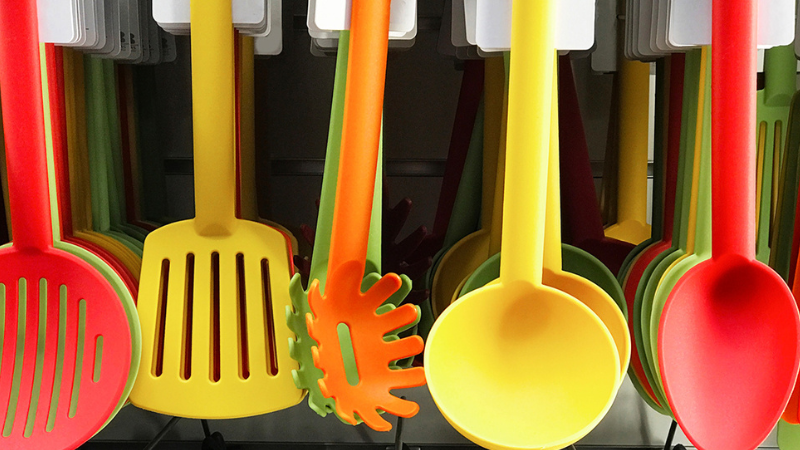
Silicone cookware is a cooking material made from silicone rubber. Silicone rubber is a type of synthetic polymer and combines natural elements, including silicon, oxygen, carbon, and hydrogen. This material is perfectly safe for cooking and baking compared to other cookware.
Food-grade silicone satisfies standards that make it safe for cooking and storage. They are durable, non-stick, heat resistant, safe, and versatile. In addition, silicone utensils preserve the taste of your food. They are versatile and available in bright colors, making cooking fun. It typically comes in bright colors, and different shapes, and is easier to handle than fiddly paper or heavier metal bakeware.
Although silicone is not biodegradable, it is not a hazardous waste. Furthermore, even though it is recyclable, it needs a unique recycling process. Besides its safety, silicone is widely used in bakeware because it is inert and does not leach tastes or odors into your food.
In addition, the material can withstand temperatures up to 220 degrees C. Because silicone remains stable in extreme cold, the material is suitable for storing foods in the freezer or refrigerator.
Pros of Silicone Cookware
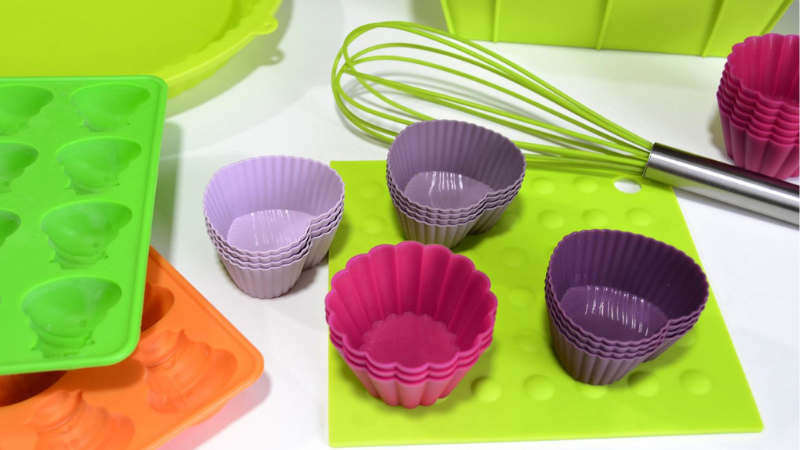
Silicone manufactures various kitchen utensils, including silicone spatulas, potholders, cake pans, bread tins, and muffin pans. This material has several benefits in cookware, including:
Non-stick
Silicone utensil is a non-stick cookware. Therefore, the silicone bakeware is easy to clean since food items do not stick to it. In addition, you don’t need too much oil when cooking your food or baking.
Consequently, you get to eat healthier by reducing the amount of oil or butter you use. In addition, you can easily remove your baked items from the silicone bakeware. The non-stick surface of silicone utensils makes them ideal for cooking foods that tend to stick to other materials such as metal or plastic.
Flexible Material
Silicone is flexible and suitable for making cookware in several colors, shapes, and sizes. To surprise your family and friends, you can make fun-shaped silicone molds for baking muffins and cookies.
Dishwasher Safe

Silicone dishes and silicone baking sheets are dishwasher-safe. You can also handwash them with a brush and soapy water. Nevertheless, when washing, avoid using abrasive soaps. These soaps can scratch the silicone surface and compromise your cookware.
Silicone utensils can bend and reach every corner without breaking or damaging the food container. For example, the silicone spatula’s lightweight body ensures that every piece or drop of food is scooped out without scratching the inside of the container. Furthermore, because this type of silicone bakeware hardly stains, cleaning it is easy, and it also maintains its vibrant colors, they don’t damage any cookware and are dishwasher safe.
Cost-effective
Usually, safer and healthier cookware comes at ridiculous prices. However, silicone products are affordable. Regardless of your spending, you will surely get your money’s worth. Moreover, the material is durable and functional.
Microwave Safe
Many plastic dishes melt and may explode when you put them in a microwave. However, with silicone bakeware, you don’t have to worry about this. The material is microwave-safe. You can put silicone utensils and silicone kitchenware directly in the oven from the freezer and into the freezer from the oven.
Heat resistant
Silicone has a high-temperature resistance. It can withstand temperatures up to 220 degrees C. Consequently, you don’t have to worry about burning your wooden or silicone utensils and silicone bakeware if you accidentally leave them in the pot or pan while cooking.
Take the First Step:
Requst for an Inquire
Quality Meets Affordability. Inquire Now for High-Quality Products at Low Volumes.
Cons of Silicone Cookware
Although silicone cookware has several benefits, it is not 100% perfect. Some of the cons of silicone bakeware include the following;
The material is prone to scratching. Therefore, you have to be extra careful when handling your cookware. Nevertheless, the scratches do not affect their functionality or make them hard to clean.
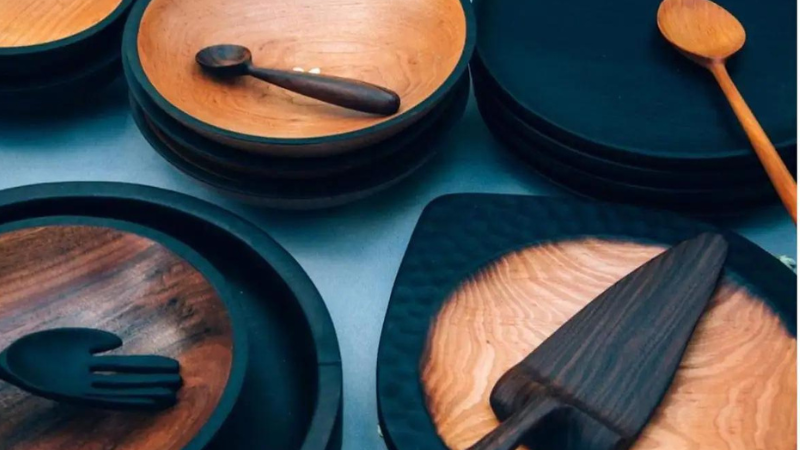
While silicone utensils are versatile, they may not be suitable for all types of cooking. For example, they might not be good for grilling because they don’t conduct heat like metal utensils. Unless you use silicone tableware especially suitable for grilling, such as silicone oven liner.
Silicone cookware is too flexible, and it is easy to spill food from them. Consequently, you must be careful when picking up or carrying your pan bakeware when it is complete. A quick tip for handling silicone bakeware with hot food is to put a plate under the mold to prevent spilling the food. It is also ideal to use an oven mitt when removing the bakeware from the oven.
Is Silicone Harmful to Health?
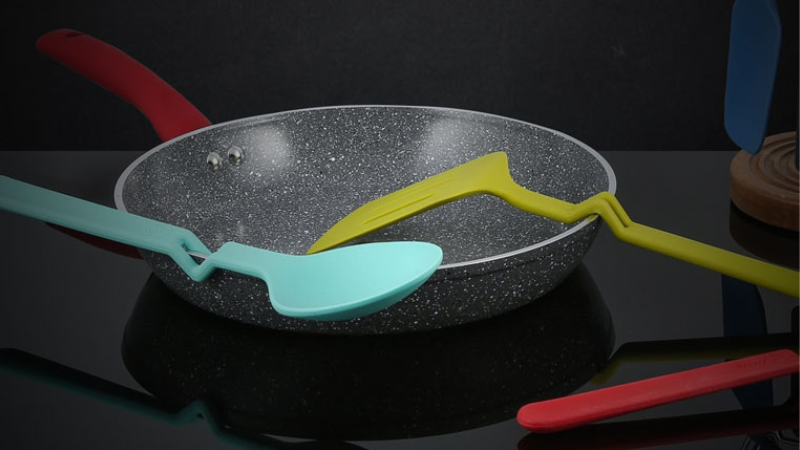
Many experts certify silicone as safe. The rubber is very stable and almost inert. Therefore, it does not produce hazardous fumes. In addition, it does not react with food or beverages. Thus, the FDA approves food-grade silicone for cooking and storage. Furthermore, food-grade silicone is free of chemical fillers and byproducts.
Unlike some plastic utensils, silicone are food-grade materials and do not leach harmful chemicals into food when heated. This makes it a safer option for those concerned about the health effects of plastic.
However, contrary to popular opinion, silicone is not as safe as many claim it to be. This material breaks down into component siloxanes at temperatures exceeding 149 degrees C. Consequently, it is essential not to use silicone cookware in extreme temperatures.
Furthermore, there have been concerns about cheaper silicone cookware grades. These grades often contain colors chemical fillers, and binders. Moreover, they have low quality. Therefore, before purchasing silicone products, check the labels and always choose reputable brands.
Take the First Step:
Requst for an Inquire
Quality Meets Affordability. Inquire Now for High-Quality Products at Low Volumes.
Does Silicone Release Toxins When Heated?
Although silicone is thermally stable, studies show that the material breaks down on exposure to extremely high temperatures into its constituents. Siloxanes are silicone monomers and are small compounds containing silicon, oxygen, carbon, and hydrogen. In addition, food with high-fat content can also release siloxanes.
Although small concentrations are not harmful to human health, continued exposure increases the attention of this compound in the human body. High concentrations of siloxanes adversely affect human health, causing weight loss, liver problems, and cellular changes.
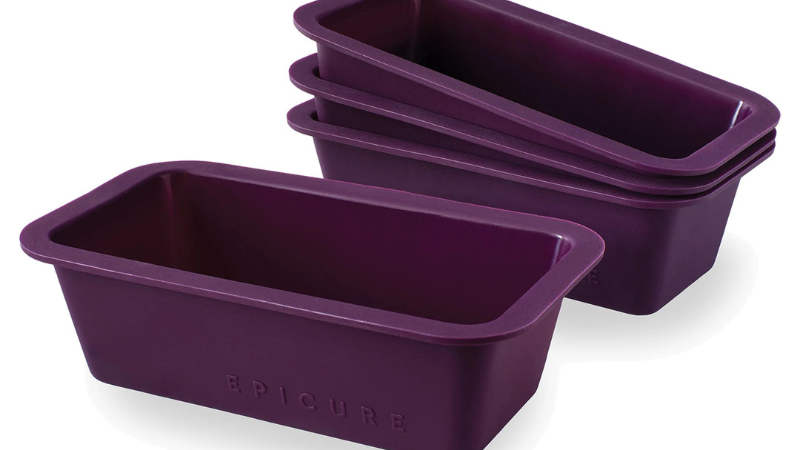
How to Choose the Right Silicone Cookware?
The market is flooded with several types of cookware that claim to be made from food-grade and 100% silicone. However, this is not always the case. Before purchasing pure silicone cookware, you must consider several factors. These factors include;
Certification
From simple households to international cooking media, silicone kitchenware has dominated the cookware industry. Food-grade silicone should be certified by the FDA. This certification shows that the silicone kitchenware is safe for use with food. When purchasing silicone bakeware, look out for FDA approval. Using FDA-grade silicone materials has many benefits.
Manufacturer
The FDA only approves manufacturers that meet their standards after rigorous testing. However, some manufacturers claim their products are food-grade despite producing low-quality silicone cookware.
An excellent way to tell dubious silicone bakeware apart is that they are usually cheaper and may even melt after a single use. But to avoid wasting resources, it is best to purchase silicone bakeware from only well-known and reputable manufacturers that assure their silicone cookware is FDA-compliant.
Fillers
Cheap silicone products like baking tools usually have harmful chemicals and additives which constitute a health hazard to humans. Although the chemical fillers reduce the cost of the cookware, they result in poor-quality material. Moreover, low-grade silicone bakeware has less resistance, and they crack easily. In addition, fillers leach into food at high temperatures.

Besides the cost, another way to check silicone cookware for chemical fillers is to do a bending test. When you bend the silicone baking pans and notice a series of white lines, the silicone bakeware most likely has fillers.
Lead and BPA-free
BPA and lead can leach into food, causing poisoning from accumulation. Therefore, when purchasing silicone cookware, only buy ones free from BPA and lead.
Maximum Temperature
Silicone cookware is stable in temperatures up to 220 degrees C. Before choosing cookware, check the stated maximum temperature. If the value exceeds the standard, the cookware contains additives and is not of good quality. Low-quality silicone bakeware will emit odors and get discolored on exposure to elevated temperatures.
Sturdiness
Although flexible, good-quality food-grade silicone is sturdy. When purchasing kitchen utensils, it is best to use sturdy ones instead of thin ones.
Take the First Step:
Requst for an Inquire
Quality Meets Affordability. Inquire Now for High-Quality Products at Low Volumes.
Recipes That Are Perfect for Silicone Cookware
Several types of silicone cookware include pans, cookie sheets, spatulas, and pot holders. In addition, several recipes are perfect for this flexible cookware. Generally, anything you bake in regular-shaped pans can be baked in silicone molds. For example, you can make baked goods like cupcakes, bread, desserts, and muffins with silicone molds.
Perfect recipes for silicone bakeware include candy, chocolate chips, mini pies, mini cheesecakes, caramels, tarts, and gummy bears.
When baking with your silicone mold, it is essential to keep things small. Small to average-sized molds help to create food in different shapes for a large group of people.
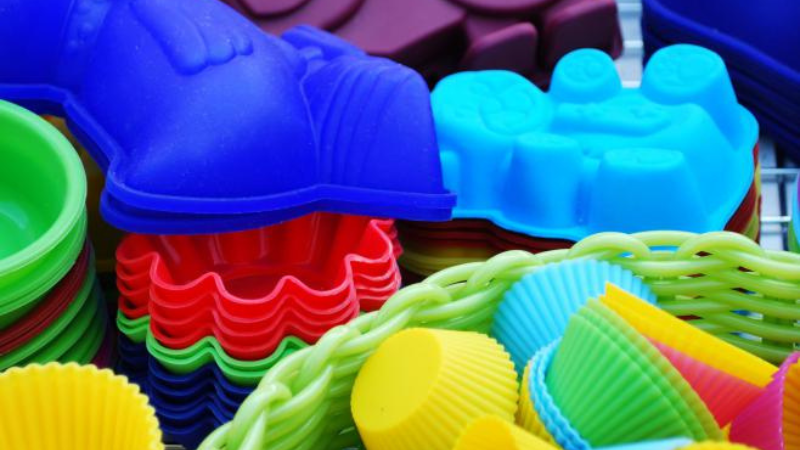
When cooking with your silicone molds, ensure you don’t heat the silicone beyond certain temperatures to prevent the release of harmful toxins. In addition, keep your silicone mold away from areas with extreme heat and open flames.
Lifespan of Silicone Cookware
Silicone is durable and flexible. The material can withstand high temperatures and chemical exposure. In addition, it does not corrode or react to acids, unlike some metal utensils. With proper handling, silicone kitchen utensils can last longer than alternative cooking utensils.
However, it is essential to note that, with time, silicone products will lose shape and need replacement. Nevertheless, the lifespan depends on the baking tools’s quality and how often you use it.
Are Silicone Utensils Environmentally Friendly?
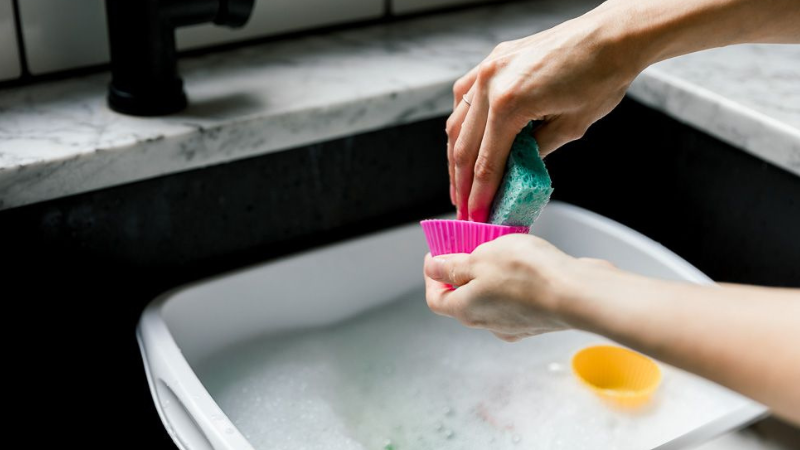
Many people consider silicone an alternative to plastic since it is BPA and phthalate-free. In addition, due to its inert nature, the FDA approves this synthetic rubber for use in food applications.
Unfortunately, the material is not biodegradable. A silicone material may take up to 500 years to break into inorganic matter. Although this is not ideal for the environment, it is better than plastic. Unlike plastic, silicone does not float in the ocean, poisoning fish. In addition, because of its chemical stability, the material does not leach toxins to the environment while breaking down.
Therefore, silicone is not exactly eco-friendly. However, compared to plastic, this material is more eco-friendly.
Take the First Step:
Requst for an Inquire
Quality Meets Affordability. Inquire Now for High-Quality Products at Low Volumes.
Is Silicone Bakeware Recyclable?
Yes. Just like plastic, silicone is also recyclable. However, because the material degrades with each recycling process, it is considered down-cycled. Furthermore, recycling silicone is quite tricky. Therefore, it requires a unique recycling process which is quite expensive.
For proper recycling of silicone kitchen utensils, special recycling centers are necessary. Consequently, many people throw away their silicone cookware at the end of its life. Proper recycling can downcycle the material into an oil suitable for use as an industrial lubricant.
Is Food-Grade Silicone the Same as Medical-Grade Silicone?
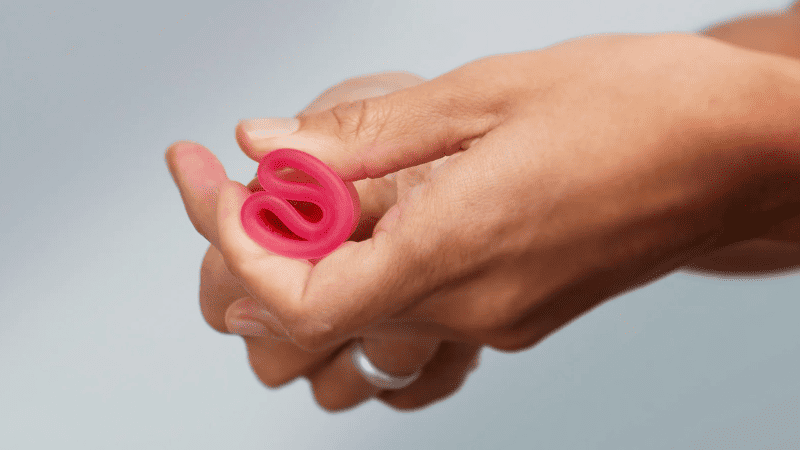
Silicone is a versatile elastomer for several applications, including food and medical appliances. However food-grade silicone is not the same as medical-grade silicone. For example, silicone cookware is made from food-grade silicone. Although silicone bakeware uses safe silicone, medical-grade silicone requires higher standards and biocompatibility.
The difference between these two types of silicone grades is their cost and the tests they undergo. Food-grade silicone is cheaper to manufacture compared to medical-grade silicone. In addition, food-grade silicone does not go through as many tests as its medical-grade counterpart.
Generally, food-grade silicone produces spatulas, frying pans, and storage containers. On the other hand, medical-grade silicone is used to manufacture nursing teats and medical implants.
Take the First Step:
Requst for an Inquire
Quality Meets Affordability. Inquire Now for High-Quality Products at Low Volumes.
Conclusion
Besides its flexibility, silicone cookware is available in several shapes and sizes, helping you make food, especially desserts, in exciting shapes. Silicone cookware is an excellent alternative to metal ones – oven and freezer-safe. Not only does silicone bakeware make the baking process easier, but it also makes your clients more eager to bake some homemade delights.
However, not all silicone cookware and bakeware meet FDA standards. Therefore, choosing only silicone rubber products certified for use with food is essential.
Hongju Provides High-Quality Silicone Products
Hongju is a rubber manufacturer with experience manufacturing several rubber products from different types of rubber. We manufacture silicone cookware such as silicone spatulas and other baking products to meet your needs and comply with FDA standards. Turnaround time and delivery are fast, and our products are reliable. Also, you can check our silicone rubber products knowledge page and Hongju Blog to learn more!